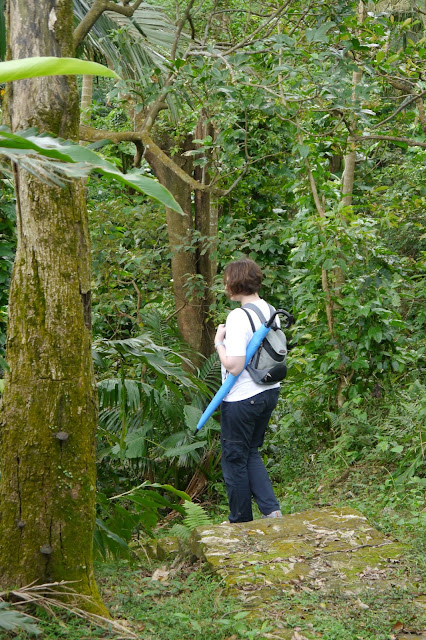After a very long break I could finally take Ania for her Tuesday nature class. I really enjoy these classes, probably more than Ania ;-) .
This time we met at the Hushi Park close to Academia Sinica 中央研究院.
Hushi (Hu Shih) is actually a person's name. Hu Shih ( 1891 - 1962) was a Chinese philosopher, diplomat, essayist and advocate for Chinese language reform (took part in the May 4th Movement). In the years 1910-1917, he studied in the USA (Cornell and Columbia Universities). In 1938 he went back to United States, this time to take post as a Republic of China ambassador. Between 1946-1948 he served as the president of Peking University and later, after moving to Taiwan, as the president of Academia Sinica. For more information about the life and accomplishments of this great scholar please go to Wikipedia.
So why is a park named after this person? Simply because his tomb is located there.
But ... as this was a nature class for little ones and not a history walk for the moms, we did not stop to visit Hu Shih's grave nor other graves located in the park (Taiwanese people don't really like visiting graveyards).
The park is actually a very densely overgrown hill, with many stairs and narrow paths.
We started the class with making a chain with flowers.
Then the teacher talked about the very tall pine trees growing in the park.
And afterwards we started climbing. Up - up - up. Some stairs were more overgrown than the others.
Right next to the park, on the other side of the hill is an elementary school. It doesn't have a wall around it, you can go straight onto the school grounds from the park.
On the way we met some snails, a lizard, butterflies, caterpillars and lots of mosquitoes.
On the next photos you can see how overgrown the city park's path can get.
After we finally got to the top of the hill, we could enjoy the nice view below. Unfortunately it was cloudy (and rainy) so the view wasn't that great.
On the way down we walked through a bamboo forest:
All the photos from that day were taken by my helper, Jaś. Thank you.
Here is my favourite:
And here is Jaś:





















Comments
Post a Comment